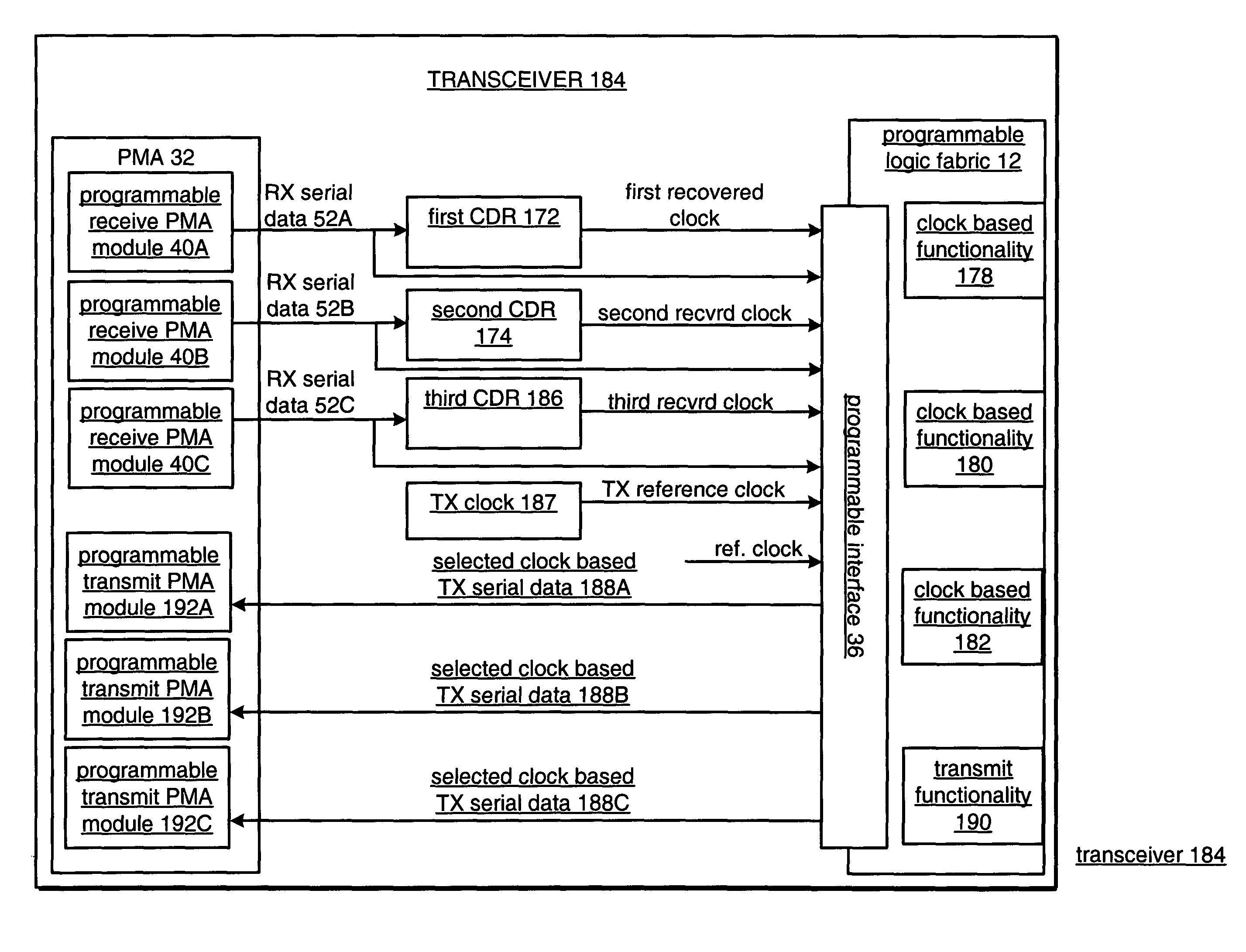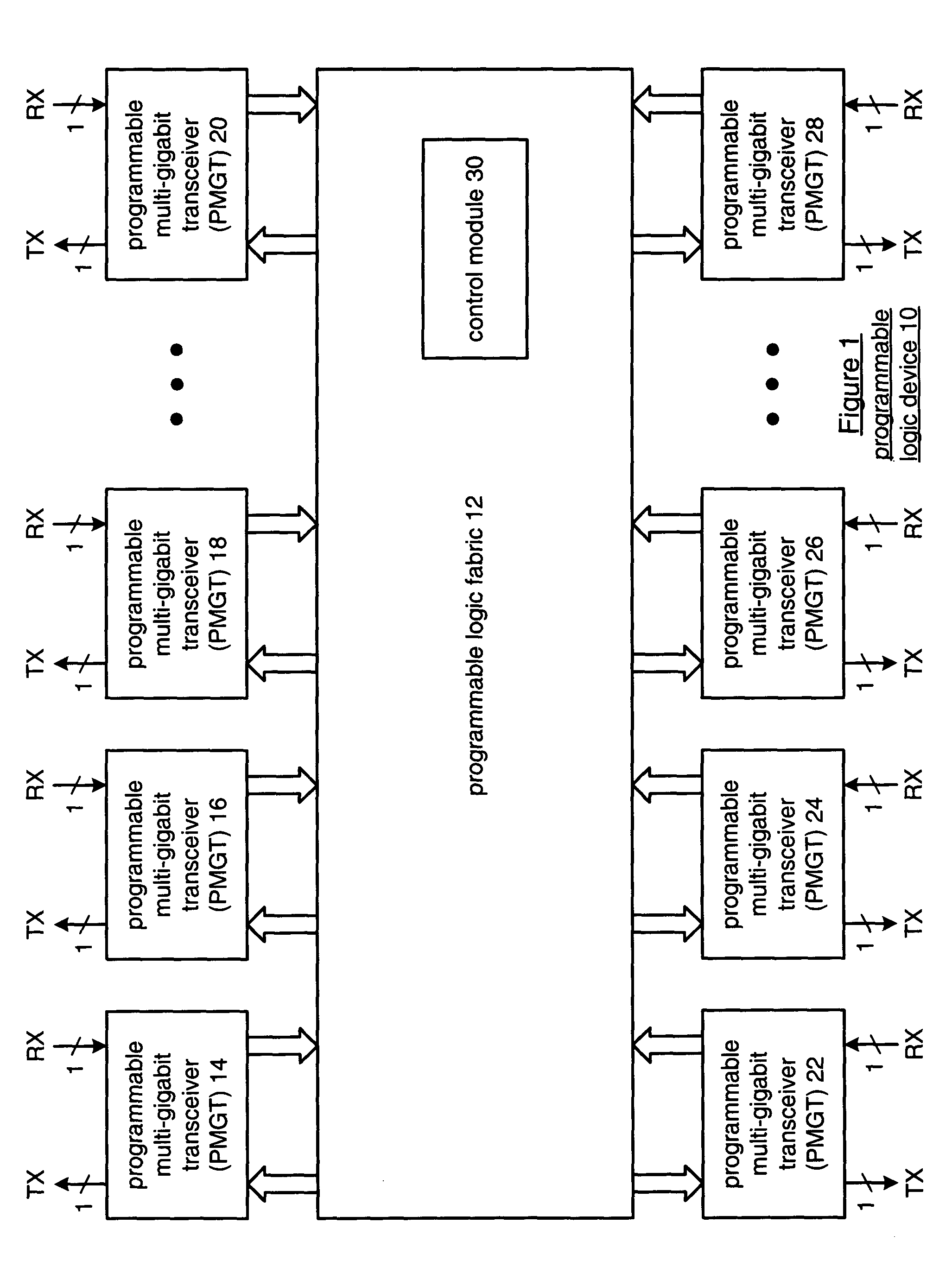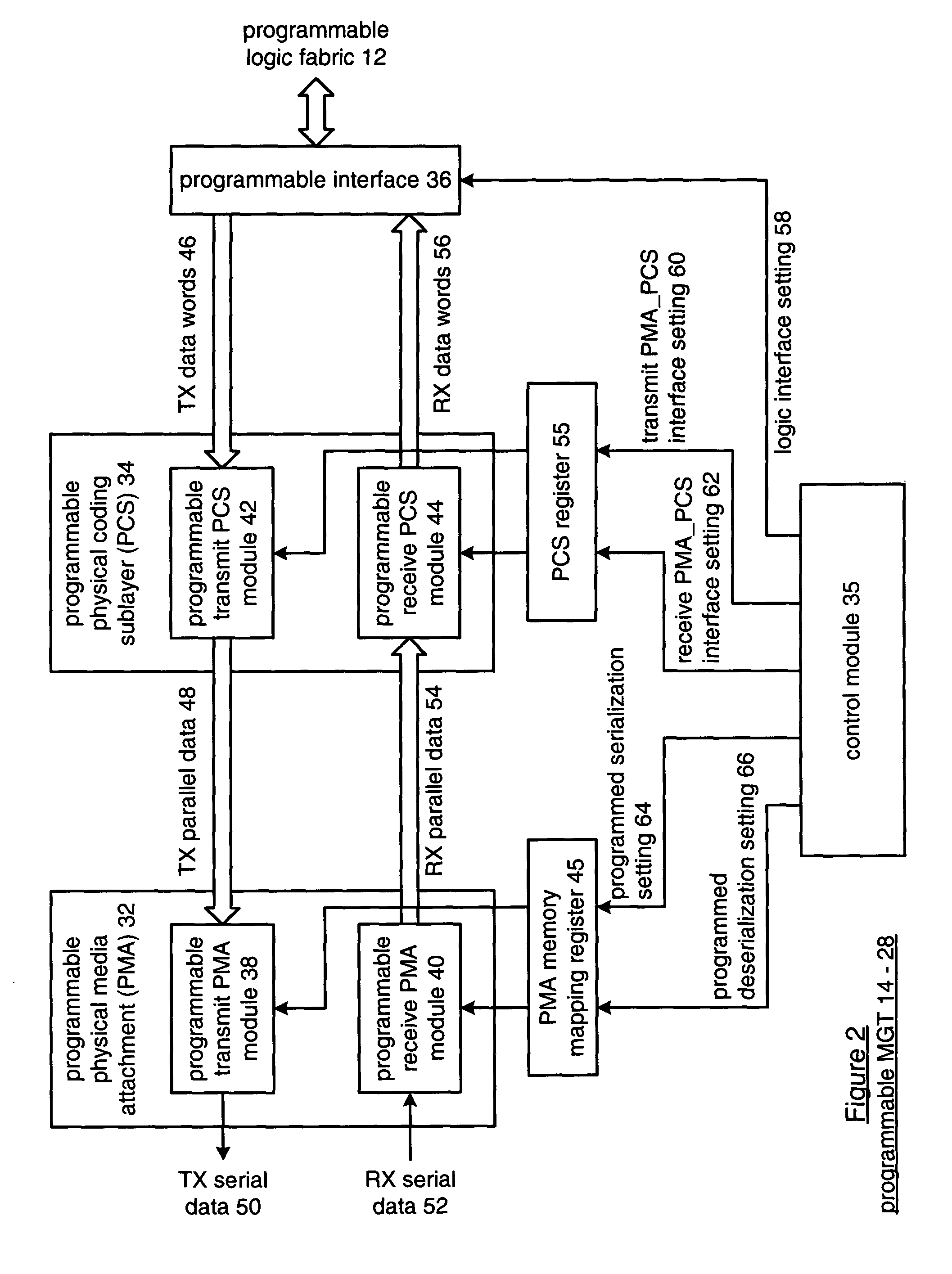MGT/FPGA clock management system
a clock management system and clock technology, applied in the field of communication systems, can solve the problems of high clock speed, limited bandwidth of prior art clock recovery circuits, and speed at which high-speed serial transceivers may operate without excessive jitter performance and/or noise performance, and achieve high data rate serial data, reduce or eliminate timing mismatches, and reduce the effect of high data ra
- Summary
- Abstract
- Description
- Claims
- Application Information
AI Technical Summary
Benefits of technology
Problems solved by technology
Method used
Image
Examples
first embodiment
[0069]A plurality of methods of processing high data rate serial data utilizing the various embodiments of the transceivers illustrated in FIGS. 5-8 are illustrated in FIGS. 11-14. More specifically, FIG. 11 illustrates a method for processing high data rate serial data according to the invention. Initially, the method includes receiving a high data rate input data stream at the transceiver (step 250) and recovering a clock based on the high data rate input data stream (step 252). Thereafter, the transceiver method includes providing the recovered clock to an FPGA (or other programmable logic) fabric portion (step 254) and performing subsequent processing in the FPGA portion based on the recovered clock (step 256).
[0070]One embodiment of the inventive method further includes receiving the high data rate input data stream according to a first protocol and converting the high data rate input data stream to a second protocol based on the recovered clock (step 258). Once the data stream...
second embodiment
[0071]FIG. 12 illustrates a method of processing high data rate serial data according to the invention. The method initially includes receiving a first serial bit stream and recovering a clock from the first serial bit stream (step 262). Thereafter, the invention includes receiving a second serial bit stream and recovering a clock from the second serial bit stream (step 264). The transceiver of the present invention then provides the first and second recovered clocks and a reference clock to a circuit portion (step 266). Finally, the method includes, within the circuit portion, choosing among the first and second recovered clocks and the reference clock for subsequent processing for a specified functionality (step 268). As previously described, the circuit portion may be a fixed circuit or may be programmable logic fabric.
third embodiment
[0072]FIG. 13 illustrates a method of clock management according to the invention. The clock management in a processing block of a transceiver device includes receiving a first data stream and recovering a first clock based on the first data stream (step 270) and providing the first recovered clock to a first circuit portion (step 272). Additionally, the transceiver may receive a second data stream and recover a second clock based on the second data stream (step 274), and may provide the second recovered clock to a second circuit portion (step 276). The transceiver may also provide a reference clock to a third circuit portion (step 278). Finally, the processing block may concurrently perform processing functions in using one or more of the first and second recovered clocks and the reference clock (step 280).
PUM
 Login to View More
Login to View More Abstract
Description
Claims
Application Information
 Login to View More
Login to View More - R&D
- Intellectual Property
- Life Sciences
- Materials
- Tech Scout
- Unparalleled Data Quality
- Higher Quality Content
- 60% Fewer Hallucinations
Browse by: Latest US Patents, China's latest patents, Technical Efficacy Thesaurus, Application Domain, Technology Topic, Popular Technical Reports.
© 2025 PatSnap. All rights reserved.Legal|Privacy policy|Modern Slavery Act Transparency Statement|Sitemap|About US| Contact US: help@patsnap.com



